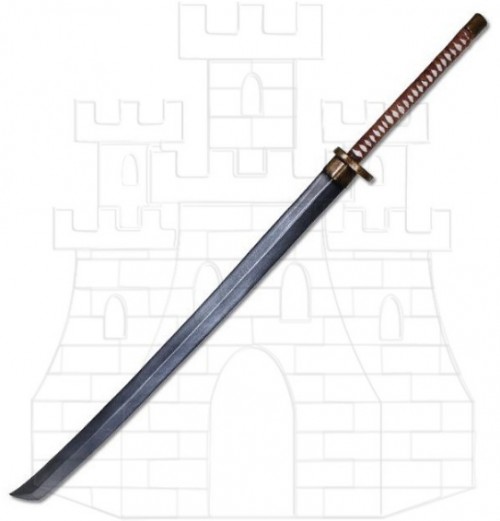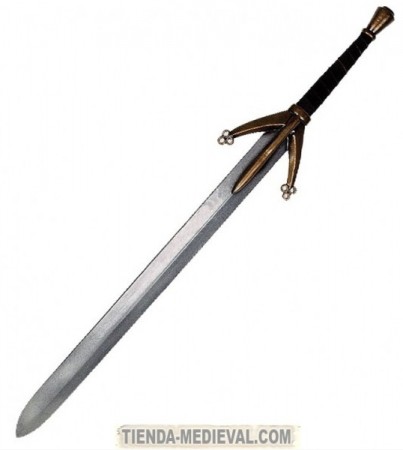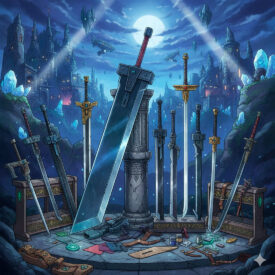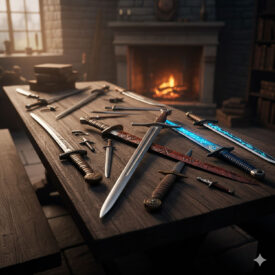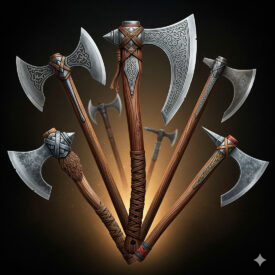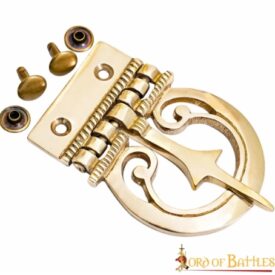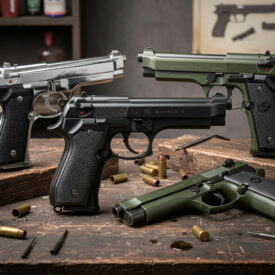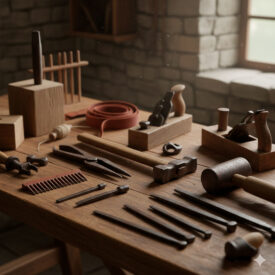What does it feel like to wield a sword that looks like it’s forged in the heat of battle, but is actually designed to protect you? That duality — absolute realism and safety — is the promise of latex swords, recreation tools that have turned theater, cinema, and LARP into scenarios where history can be touched without losing physical integrity.
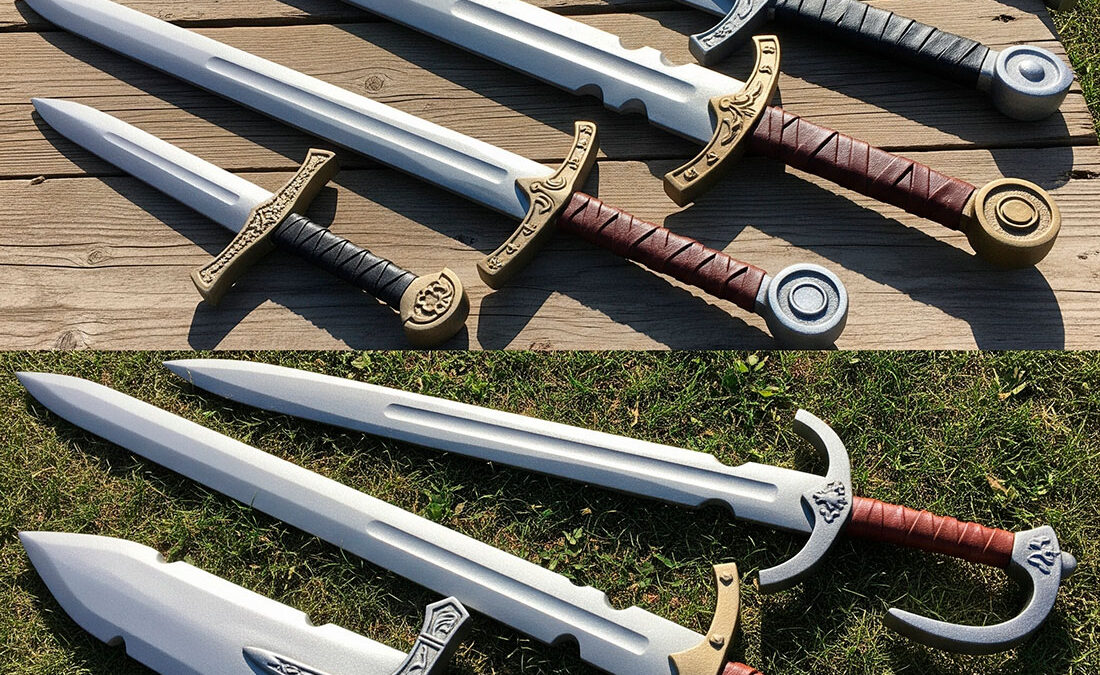
In this article, you’ll discover how latex swords are made, their materials and variants, when and why to choose each model, how to care for them to prolong their lifespan, and what technical aspects you should consider for optimal handling. You’ll also find a chronology with key milestones in the evolution of these replicas, comparative tables to choose by characteristics, and a frequently asked questions section that will clarify the most common doubts.
Chronology: The Evolution of Latex Swords
A brief journey through time to understand how we went from theatrical props to specialized replicas for LARP and reenactment.
- Late 19th Century – Early 20th Century: Theatrical props incorporate lightweight replicas for fight scenes; experiments are made with wood, leather, and soft metals.
- 1960s–1970s: The first modern historical reenactment groups and live-action role-playing communities emerge; the need for safe weapons for contact scenes intensifies.
- 1980s: Foam covered in latex strongly appears in props and special effects; latex swords are developed for film and theater, with greater aesthetic realism.
- 1990s: LARP culture expands; artisans begin to produce latex swords with composite cores (fiberglass), improving durability and balance.
- 2000–2010: Advances in molding techniques, paints, and finishes; hand-painted replicas become popular for their realism; specialized manufacturers appear in Europe, and Denmark gains a reputation for quality.
- 2010–2025: Innovations in core materials (carbon fiber), quality control, and standardization for LARP; greater offering of designs (Roman, Viking, nodachi, claymore, Spartan) and demand for custom pieces.
What Are Latex Swords and Why Do They Matter
A latex sword is neither a toy nor a real sword; it’s a replica designed to deliver two complementary values: appearance and safety. Its main purpose is recreation: LARP, theater, cinema, photography, and cosplay events where visual realism should not imply physical risk.
Key Components
- Structural Core: Generally fiberglass or carbon fiber that offers the necessary rigidity for handling and resistance to repeated flexing.
- Coating: Molded foam covered with liquid latex, which creates the flexible, cushioned surface that absorbs impacts.
- Painting and Finishes: Layers of acrylic paint and aging techniques applied by hand to reproduce metallic textures, rust, or battle marks.
Types and Styles: Finding the Aesthetic You’re Looking For
The variety is enormous: short swords, long swords, Viking swords, Roman, Spartan, or replicas of katanas and nodachis designed for more exotic settings. Each design influences use, balance, and combat technique.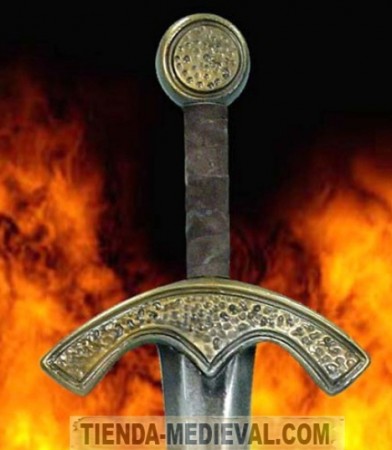
The choice between a short or long blade is not only aesthetic: it determines maneuverability, reach, and the type of reflexes you’ll develop in combat. A short sword favors close encounters and agile play; a long sword favors space control and thrusting techniques.
Typical Uses
- LARP: simulated contact, choreographed combat, and live narratives.
- Historical Reenactment: setting and demonstrations with an emphasis on visual authenticity.
- Theater and Cinema: scenes with movement and frames that require realism without danger.
- Cosplay: lightweight and detailed pieces for events and photo shoots.
Materials and Manufacturing Technique
Understanding the materials allows you to choose better. Here’s a comparative table with the cores and their properties:
| Core Material | Advantages | Disadvantages |
|---|---|---|
| Fiberglass | Balance between flexibility, cost, and durability | Can fatigue with extreme use; less lightweight than carbon |
| Carbon Fiber | Lightweight, very resistant, excellent return | Higher cost; requires professional handling |
| Reinforced Wood | Low cost, traditional feel | Less safe against impacts; more rigid and heavier |
- Fiberglass
-
- Characteristics: Good strength-to-weight ratio
- Recommended Use: LARP and theater with frequent use
Summarized Manufacturing Process
- Core: installation of the core (fiber), checking flexibility and length.
- Foam: molding the blade’s shape with high-density foam.
- Latex: multi-layer coating to create a flexible and resistant finish.
- Painting: application of textures, washes, and shadows to simulate metal and wear.
Comparison: Lengths, Weight, and Purpose
The following table helps to understand what to expect in terms of size and use:
| Type | Blade Length (approx.) | Weight (approx.) | Recommended Use |
|---|---|---|---|
| Short Sword | 60–75 cm | 180–250 g | Fast exchanges, agile LARP |
| Long Sword | 100–135 cm | 250–395 g | Space control, medieval reenactment |
| Two-handed / Claymore | 110–135 cm | 300–420 g | Tournaments and large-scale reenactments |
- Short Sword
-
- Blade Length: 60–75 cm
- Use: Fast and dynamic combat
Combat Safety and Basic Usage Rules
Safety is the cornerstone: a well-designed and well-used latex sword reduces the risk of injury, but it doesn’t eliminate it completely. Always practice basic rules:
- Protective Gear: helmet, chest plate, gloves, and protection for vulnerable points.
- Contact Rules: define maximum impact force and permitted striking areas.
- Pre-inspection: check the core, coating, and joints before each use.
- Training: basic defense and control techniques to avoid accidental blows.
How to Choose Your Latex Sword: Questions to Ask Yourself
- What will you use it for? Energetic LARP, exhibition, or photo shoots require different balances and finishes.
- Do you need extreme realism or lightweight? A highly elaborate finish can increase fragility in fine details; a lightweight model facilitates hours of use.
- How often will you use it? For intensive use, opt for fiber cores and reinforced finishes.
- Compatibility with your group’s rules? Some events require specific lengths or hardness levels.
Quick Decision Table
| Criterion | Recommendation |
|---|---|
| Light recreational use | Short sword, simple core, aesthetic finish |
| Intensive LARP/tournament use | Fiberglass/carbon, resistant latex layers |
| Photography/scenography | Detailed finish, possible internal reinforcement |
Practical Maintenance: How to Care for a Latex Sword to Make It Last
Regular care multiplies its lifespan. Recommended procedures:
- Immediate Cleaning: remove mud or stains with a damp cloth; avoid abrasive solvents.
- Latex Protection: apply silicone spray after use to prevent the latex from drying out and cracking.
- Storage: hang in a dry place, avoid bending it or leaning it on edges that may deform the coating.
- Minor Repairs: small cracks in the latex can be sealed with specific latex adhesive or professional patches.
What products to use
- Silicone spray: protective layer that restores flexibility.
- Latex repair kit: patches and adhesive to restore the coating.
- Wall mount or padded sheath: to prevent deformations during storage.
Comparison of Care and Material Compatibility
| Part | Common Problems | Recommended Action |
|---|---|---|
| Latex coating | Wear, cracks, discoloration | Silicone spray, gentle cleaning |
| Core | Fatigue, corrosion in metal joints | Regular inspection, professional welding or replacement |
| Finishes | Paint detachment | Touch up with acrylic paint and flexible sealant |
Myths and Realities
- Myth: “A latex sword never breaks.” Reality: They are safer than a metal blade, but can suffer fatigue from intensive use or poorly applied impacts.
- Myth: “The more realistic, the better.” Reality: Excessive fine details can be weak points; balance between realism and durability is key.
Clarifying Doubts About Latex Swords: Differences, Care, and Use
What are the main differences between latex swords and those made of other materials?
The main differences between latex swords and those made of other materials are:
- Material and safety: Latex swords are made with foam coated in latex, which makes them flexible, lightweight, and safe for simulated or recreational combat. In contrast, steel or other metal swords are rigid and sharp, used for real combat or collecting, but not for safe games.
- Use and resistance: Latex ones are ideal for role-playing events, historical reenactments, and cosplay, as they allow agile movements and do not cause harm, although their durability is lower with intensive use. Steel swords are more durable and robust but less safe for contact.
- Appearance and realism: Latex ones are usually designed to look visually authentic with careful details but without real weight or edge. Metal swords have a real appearance and authentic weight, but are not safe for use in representative combat.
Latex swords differ mainly in their flexibility, safety for games, and lower durability, while swords made of other materials like steel are rigid, heavier, and not suitable for safe recreational combat.
What special care do latex swords require to maintain their durability?
Latex swords require special care to maintain their durability, which includes avoiding prolonged exposure to direct sunlight to prevent material deterioration, cleaning with soft products or only with a damp cloth to avoid damaging the surface, and storing them in a dry place protected from humidity and sudden temperature changes. In addition, they should not be bent or subjected to excessive pressure to avoid deforming them or breaking the latex. These cares help preserve their flexibility and appearance for longer.
Are there current trends in latex sword design?
There are no specific current trends documented in latex sword design based on search results. The available information addresses general trends in graphic design and color for 2025, without direct reference to latex swords. Therefore, no concrete evolution or trend can be affirmed in that field.
What brands are most recommended for latex swords?
The most recommended brands for latex swords are Forgotten Dreams and those with artisan manufacturing and high-quality materials that guarantee realism, robustness, and good balance for LARP role-playing games and reenactments. Forgotten Dreams stands out for offering very realistic, resistant, and well-balanced latex weapons, ideal for combat simulations.
How does the weight of a latex sword affect its handling and use?
The weight of a latex sword directly affects its handling and use by facilitating training and simulated combat by being lighter than real swords, which allows faster movements and less fatigue during use. This is especially useful for beginners and for safe practices in role-playing games, medieval combat, or martial arts, as it reduces the risk of serious injuries and muscle fatigue. However, inexperienced handling could be harmful even with a light sword, so control and technique remain important. In addition, its lightness favors the strengthening of arms and shoulders through repeated movements.
| Type of oil | Main characteristics | Recommended use ||——————|—————————————————-|—————————————–|| Mineral oil | High penetration, does not degrade or attract dirt | Regular protection and maintenance || Camellia oil| Natural, acid-free, non-volatile | Antioxidant protection, lubrication || Lithium grease | Dense, durable, does not evaporate | Prolonged storage, protection |
| Type of oil | Main characteristics | Recommended use |
|---|---|---|
| Mineral oil | High penetration, does not degrade or attract dirt | Regular protection and maintenance |
| Camellia oil | Natural, acid-free, non-volatile | Antioxidant protection, lubrication |
| Lithium grease | Dense, durable, does not evaporate | Prolonged storage, protection |
- Mineral oil
-
- Characteristics: High penetration, does not degrade or attract dirt
- Recommended Use: Regular protection and maintenance
Advanced Practices and Customization
If you’re looking to customize your replica, consider the balance between aesthetics and resistance. Adding lined grips, leather details, or rivets can improve immersion, but it requires a finish that doesn’t compromise the latex coating.
- Grip: leather or imitation with reinforced stitching for continuous use.
- Guards and pommel: if they are added pieces, they must be secured with flexible adhesives or screwed inserts that do not transmit stress to the core.
- Thematic painting: rust washes, bituminous coatings, and battle effects, sealed with flexible varnishes to protect the paint.
Quick Pre-use Verification Guide
- Inspect the core connection in the grip.
- Check the integrity of the coating: no cuts or deep cracks.
- Verify flexibility: the core must return to position without deforming.
- Review weight and balance: make sure it adapts to your style.
Recap of Key Points and What to Put into Practice
Latex swords combine the visual poetry of metal with the modern safety needed for recreated combat. Choose according to use, prioritize fiber cores if you’re going to use it intensively, keep the coating protected with silicone, and don’t underestimate the need for training and protective gear.
Knowing the chronology, materials, and care makes you an informed user capable of prolonging the life of a replica and increasing the safety of your encounters.
